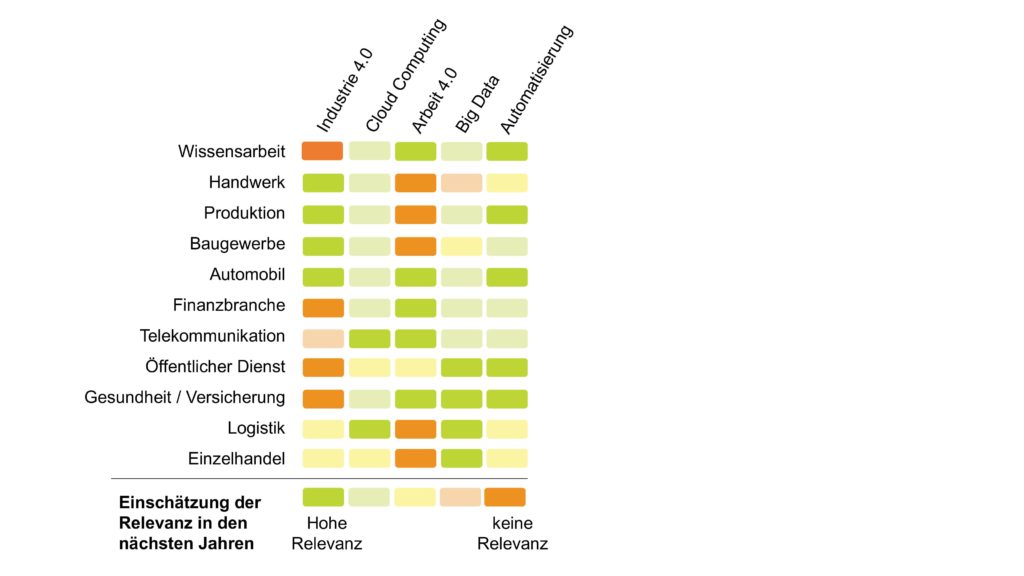Digitization can now be found everywhere and is spreading like wildfire.
I am therefore now writing a whole series of articles on the subject of digitization. My motivation behind this is that digitization means something different for every industry and type of company and I want to work out these differences. An illustration of the differences in different industries can be found in the following figure.

In this section I would now like to go into the real essence of this article and illustrate digitization in the public service.
Industry characteristics
The administration of data and information is clearly characteristic of the public service. Based on this, important decisions are made, such as notifications of applications or the issuing of important documents. The public service is also in constant exchange and direct communication with the citizen himself. Recently, however, the industry has been developing more and more in the technological area and is recognizing the value of the automation of processes or is increasingly dealing with big data.
The current digitization in the public service
Digitization in the public service is still at the very beginning. For a long time, the benefits of artificial intelligence for employees and the advantages that can be gained from big data for citizens were neglected. Technological developments such as chat bots or self-learning software are only slowly finding their way into this industry. In most cases, only a few documents can currently be completed and transmitted online. For many documents, however, a personal appearance is still required.
For many employees, the advancement of digitization is too slow in their department due to a lack of resources, and even agile methods are rarely allowed from above. Instead of technological equipment and flat hierarchies, old-fashioned work still prevails, with outdated programs and systems and a typical top-down hierarchy. Many employees are therefore already taking their own measures and using technical devices such as smartphones or tablets at the workplace. So far, this has not only led to dissatisfaction in the workplace, but also to massive data protection problems.
Advantages of digitization in the public service
While today many citizens still complain about the effort involved in going to the office and the often long waiting times, this will change significantly in the future thanks to digitization and agility. Agile methods bring more flexibility in administrative procedures, which should lead to great time savings. Online-based applications and documents should also be part of the future in the public service and even make going to office completely superfluous for citizens in a few years’ time. This possibility of using public services independent of time and place is intended to promote a better distribution of work for employees in this branch and result in better information management and advice for citizens.
Tip:
If you are as excited about this topic as I am, then you can find the entire article series here !
Image source: pixabay.com
[fotolia]


